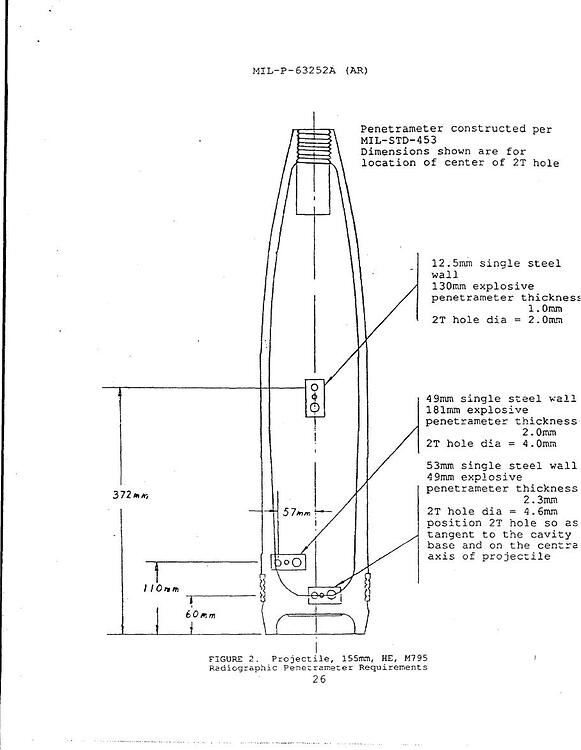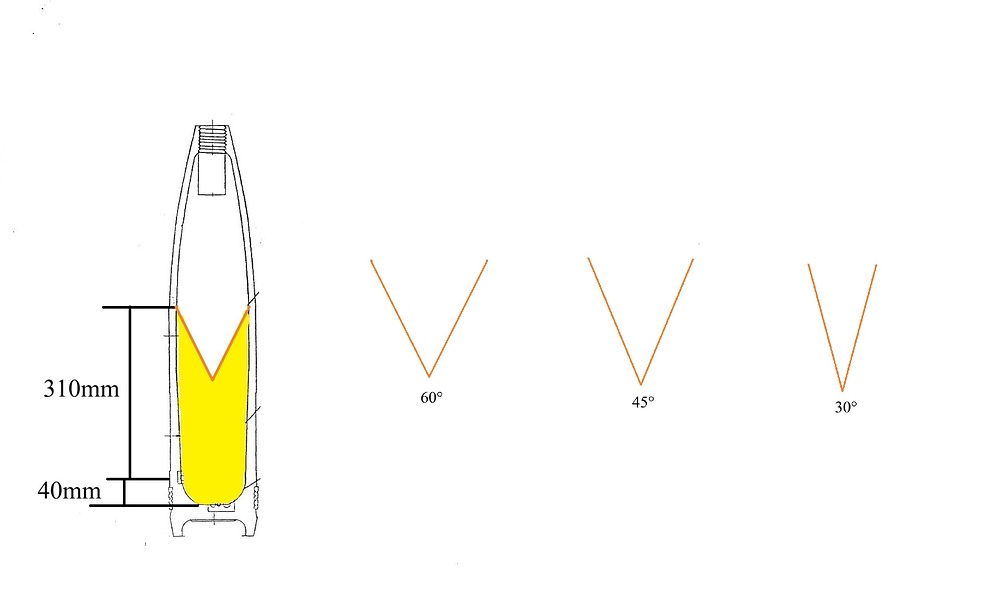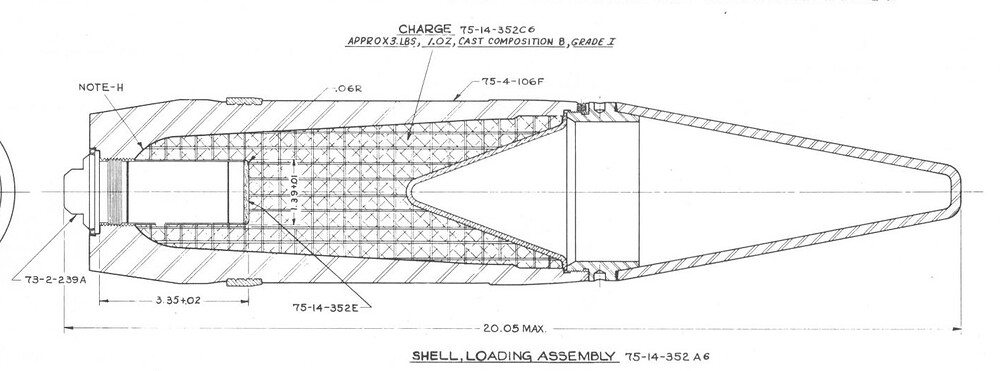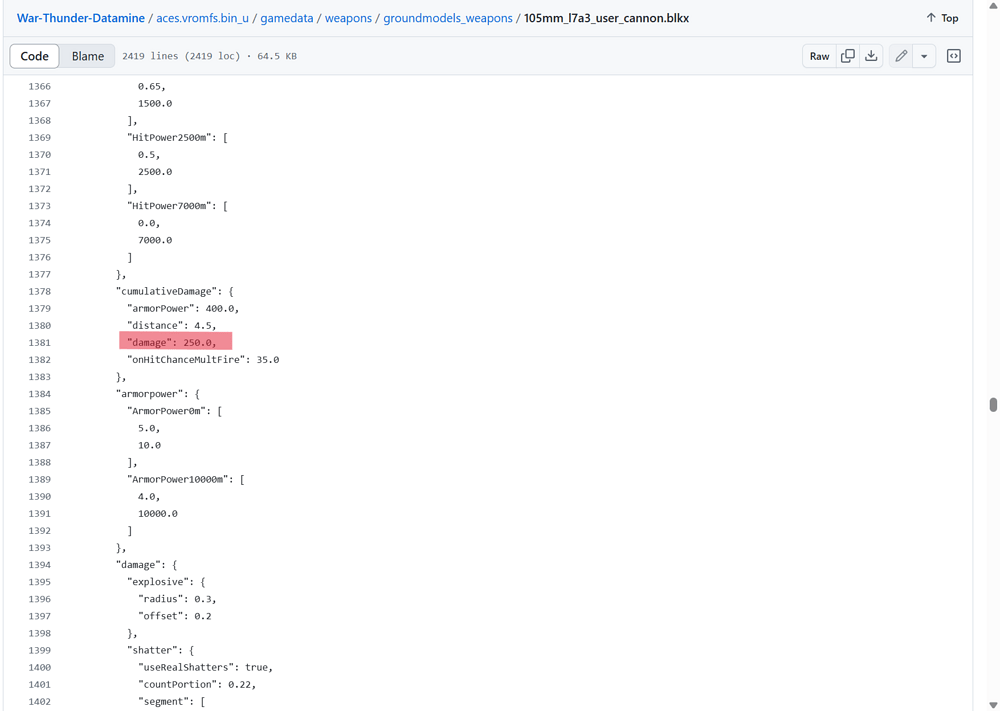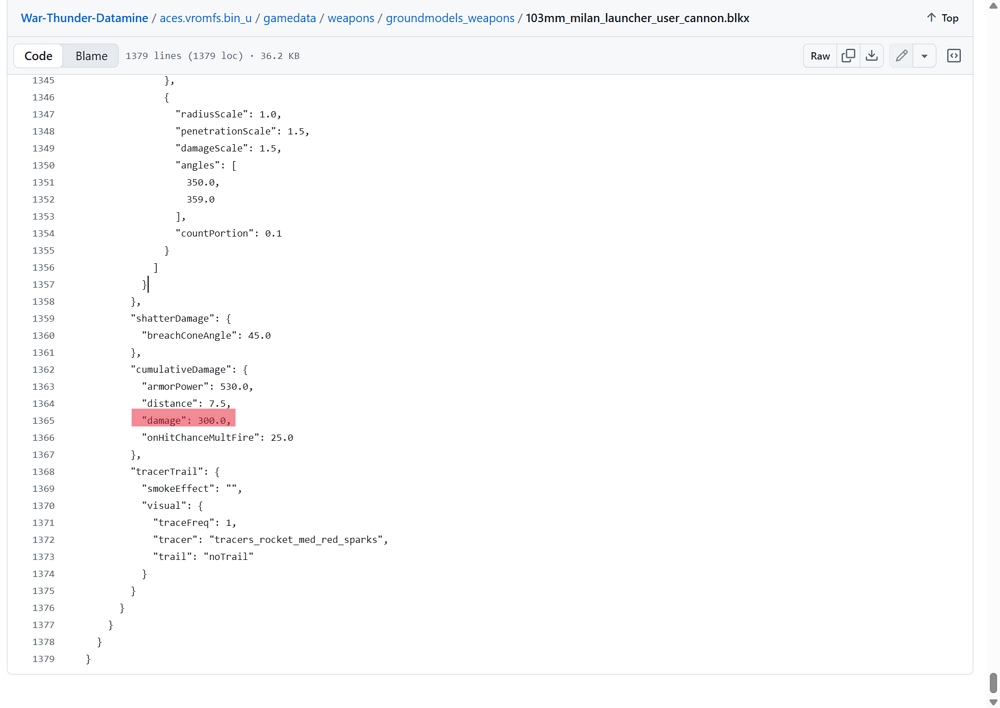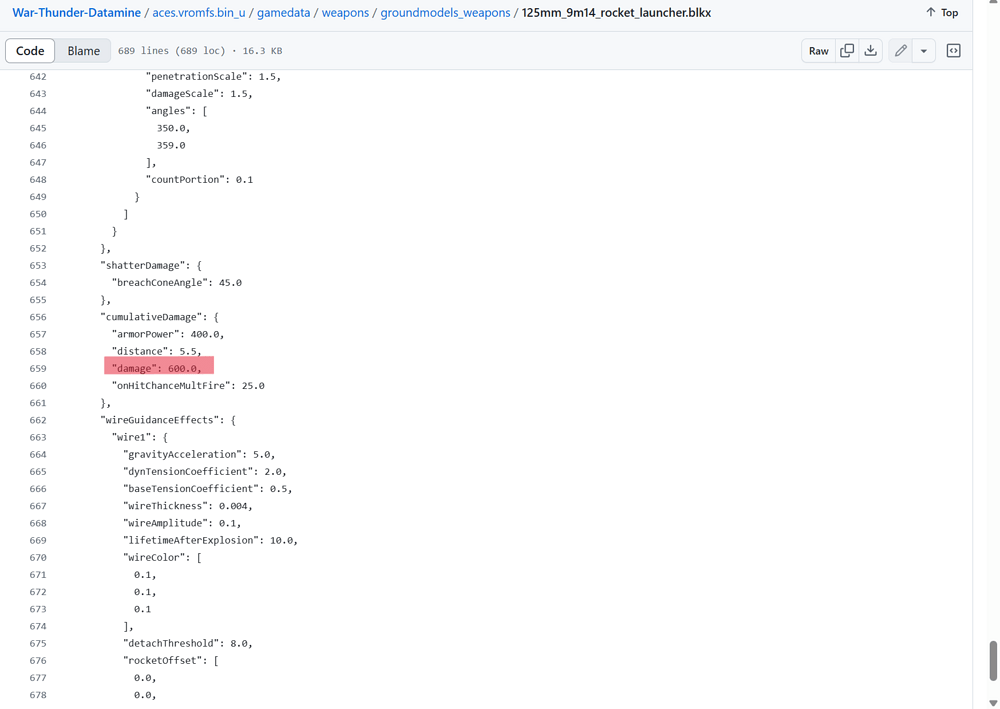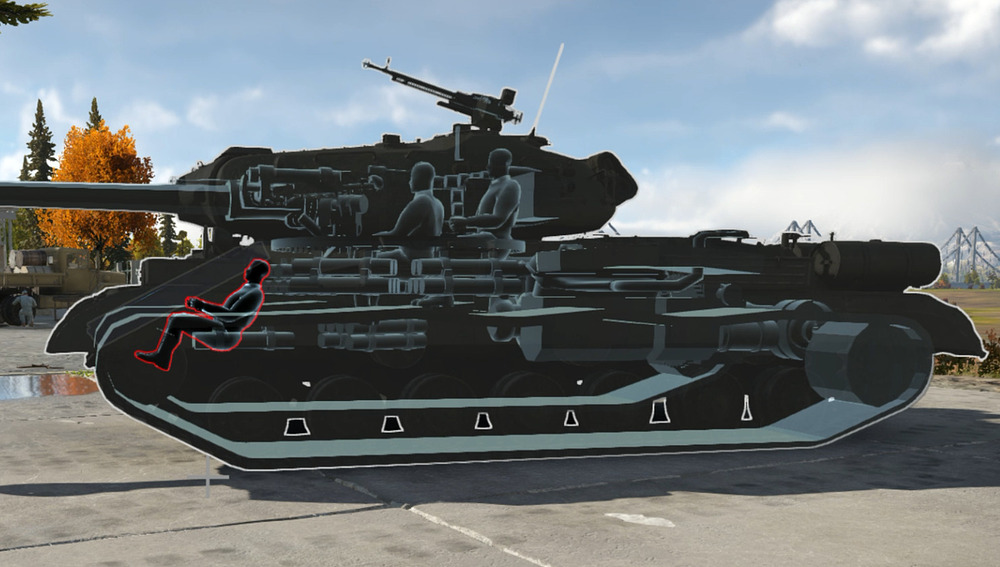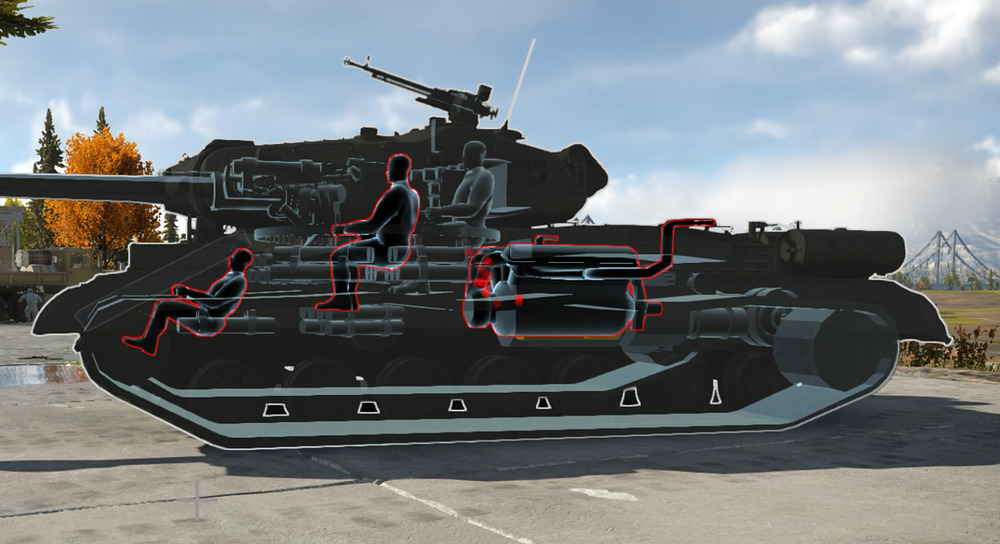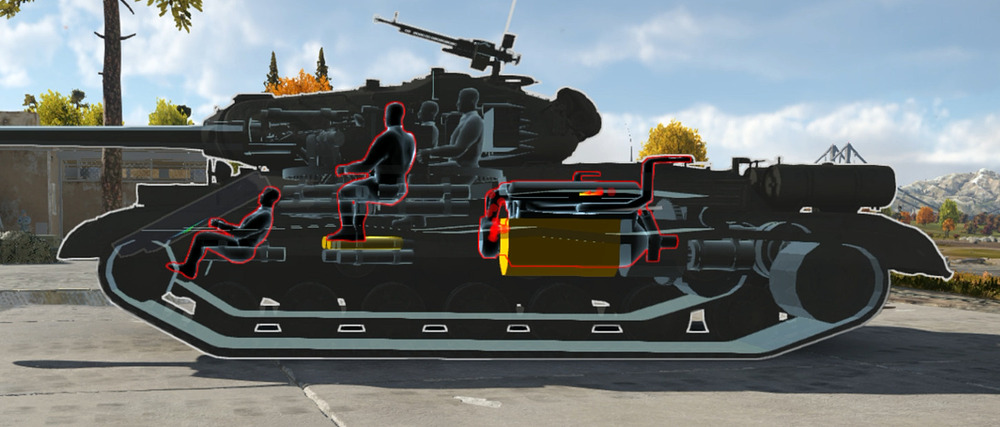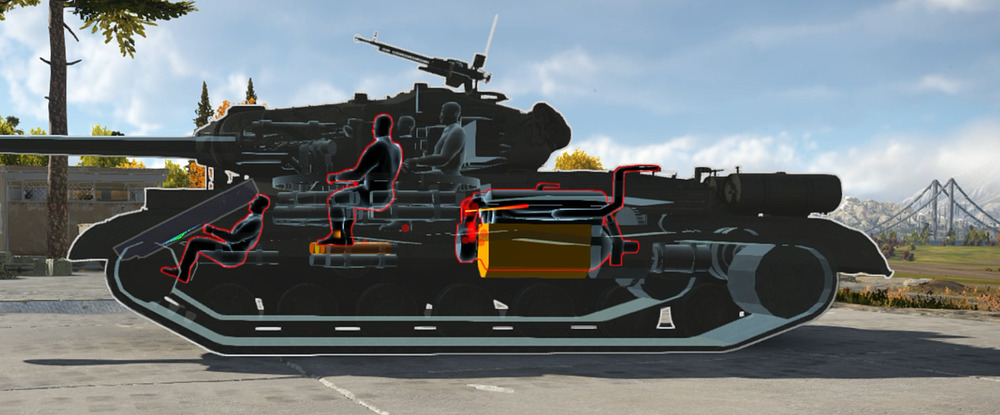I previously proposed a T267 HEAT shells mod for the T58 on the War Thunder forum, but I would like to discuss and propose a better mod again.
{Proposal for implementing T58 heavy tank}
{Previously proposed mod HEAT shells}
Overview
For details and background of the proposal, please refer to the previous proposal.
In the previous proposal, the existing rifling-stabilized HEAT round was simply enlarged based on the cube of volume law. However, this method does not take into account values other than the explosive, such as the size and volume of the fuse and sensor, the thickness of the liner, and the thickness of the shell that leads to the fragmentation effect, so for example, the shell will be extremely thick and the fuse and sensor will be unnecessarily large.
Therefore, instead of the existing HEAT round, I would like to propose a mod that takes into account the size of the shell and fuse by using a normal 155mm shell.
Specifications
We propose several patterns that will perform close to the historical T267 HEAT shell. This focuses on the amount of explosive, and the purpose is to calculate the amount of explosive, type of explosive, TNT equivalent value, and HE effect penetration required to implement it in War Thunder.
According to the source, the T267 HEAT shell has a muzzle velocity of 826 m/s, a weight of 29 kg, and a maximum penetration of 406 mm, but some other sources state that the muzzle velocity is 701 m/s and the weight is 95 lb (43.1 kg).
The standard shell data is from the 155 mm M795 shell.
Details
The thickness of the M795 shell is 12.5mm. Assuming that the explosive charge is up to the point where the streamlined part of the shell begins, the internal volume is 4.2L.
The liner is placed there, but the internal volume changes depending on the angle of the liner.
If the liner angle is 60°, the internal volume is 3.63L, if it is 45°, it is 3.51L, and if it is 30°, it is 3.13L.
The amount of explosive (weight) also varies depending on the type of explosive. For Composition B and Octol, which were used by the US military at the time, the density of the former is 1.65g/cm^3, so the weight is 5.98kg, 5.79kg, and 5.16kg, respectively, depending on the angle of the liner. For the latter, the density is 1.8g/cm^3, so the weight is 6.53kg, 6.31kg, and 5.63kg, respectively.
Mod Pattern"
The above values are shown in the table below for each pattern.
When the liner angle is 60°, it is represented as pattern A, when it is 45°, it is represented as pattern B, and when it is 30°, it is represented as pattern C.
When the explosive type is Composition B, it is represented as 1, and when it is Octol, it is represented as 2.
Pattern A
A1: TNT equivalent value 7.95kg, HE effective penetration force 59mm
A2: TNT equivalent value 10kg, HE effective penetration force 62mm
Pattern B
B1: TNT equivalent value 7.7kg, HE effective penetration force 58mm
B2: TNT equivalent value 9.72kg, HE effective penetration force 61mm
Pattern C
C1: TNT equivalent value 6.86kg, HE effective penetration force 54mm
C2: TNT equivalent value 8.67kg, HE effective penetration force 61mm
Damage model after penetration
Generally, the amount of explosive or type of explosive does not have a significant effect on the damage caused by HEAT rounds. However, War Thunder is coded with a formula that changes the damage caused by the amount of explosive.
This is an important factor in the game. For example, the MILAN missile has a penetration power of 530mm, but its damage is only as strong as that of the 105mm M456 HEAT-FS gun because the damage value of the M456 is set to r=250, while that of the MILAN missile is set to r=300.
In the game, missiles with an explosive amount of 3-5kg and a penetration power of 400mm-700mm are often set to damage r=600. Missiles with explosives of around 9kg and a penetration power of over 1000mm have a damage power of around r=1000. The AGM-65 and other missiles have explosives of 51.19kg and a damage power of r=1300, while the Ki-148 I-GO missiles have explosives of 143kg and a damage power of r=2000.
These differences in damage power appear as big differences in the game.
For example, when comparing the 105mm M456 HEAT-FS and 9M14 missiles, which have the same penetration power of 400mm, the damage power of the former is set to r=250 and the latter to r=600, as shown in the screenshot. When these two types of ammunition penetrate the IS-4M from the front, only the driver of the M456 is killed, as shown in the photo, but in the case of the 9M14, in addition to the driver, another crew member is killed and the engine is also damaged.
Comparing the protection analysis function, the damage power of the 9M14 is equivalent to the 9M113 and SS.11.The 9M113 has a penetration of 500mm, and the ss.11 has a penetration of 600mm, but the damage of both is r=600.
Unfortunately, I do not currently own a Ki-48, so I cannot compare it with the Ki-148 I-GO missile, but considering that the penetration power is 400mm and the damage power is r=2000, if it penetrates the IS-4M from the front, it is expected that the force of the scattered shrapnel will kill all the crew, or kill two crew members, damage the engine, and even damage the transmission.
Based on this, we will consider the damage power of the T267 HEAT round.
Considering that the maximum penetration power is 406mm and the amount of explosive in TNT equivalent is at least 6.86kg and at most 10kg, the damage range of r=600 to r=1000 would be appropriate.
Coding example
“cumulativeDamage”: {
“armorPower”: r=406.0,
“distance”: r=4.5,
“damage”: r=1000,
If you have detailed information or blueprints about the T267HEAT rounds, or if you have obtained them, please feel free to post them in the comments. I would also be happy if you could suggest even better mods.
If you feel that this information is sufficient, please feel free to pass it on to the developer.
*The meaning of the unit r in distance and damage is unknown, so if you know, please let me know in the comments. Also, if you have a Ki-148 missile, please perform a similar protection analysis and let me know the results.
Finally, thank you for reading this proposal.
